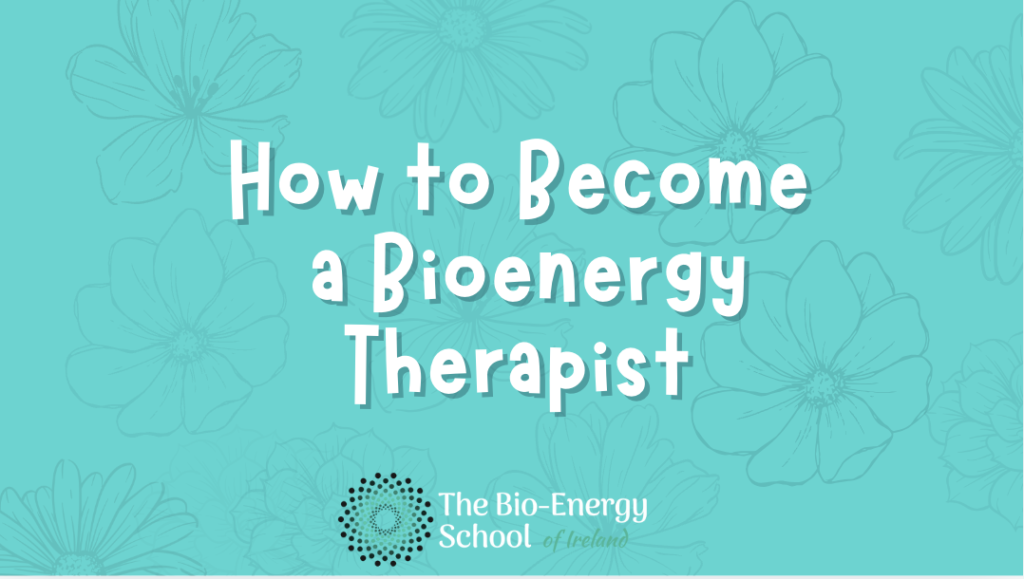
Are you passionate about healing and helping others achieve balance and wellness? Becoming a Bioenergy therapist might be the perfect path for you. Bioenergy therapy is a holistic approach that works with the body’s energy systems to promote physical, emotional, and spiritual healing. This blog will guide you through the steps to becoming a certified Bioenergy therapist, from understanding the basics to completing your training.
1. Understand What Bioenergy Therapy Is
Before diving into a career as a Bioenergy therapist, it’s essential to understand what Bioenergy therapy entails. This modality is based on the concept that the human body is surrounded and permeated by energy fields. These fields can become imbalanced due to physical, emotional, or environmental factors, leading to various health issues. Bioenergy therapy works to restore balance to these energy fields, promoting overall well-being.
2. Assess Your Interest and Commitment
Becoming a Bioenergy therapist requires a deep commitment to learning and personal growth. It’s not just about acquiring knowledge, it’s about embodying the principles of holistic healing in your own life. Consider your motivation for pursuing this path. Are you passionate about helping others? Do you have an interest in energy healing and alternative therapies? Your journey will be most fulfilling if it aligns with your personal values and interests.
3. Choose the Right Training Program for Yourself
The next step is to find a reputable training program that aligns with your goals. Look for programs that offer a comprehensive curriculum, combining theoretical knowledge with practical experience. The BioEnergy School of Ireland offers a well-rounded program that covers everything from the basics of energy systems (like chakras, aura, and meridians) to advanced techniques for addressing specific physical and emotional issues.
Some key aspects to consider when choosing a program include:
- Curriculum Content: Ensure the program covers a wide range of topics, including energy anatomy, emotional anatomy, healing techniques, and practitioner development.
- Hands-On Experience: Practical training is crucial. Look for programs that offer in-person workshops where you can practice your skills.
- Mentorship and Support: Opt for a program that provides ongoing support and mentorship as you begin your practice.
4. Complete Your Training
Once you’ve chosen your program, the next step is to dive into your studies. Training typically involves a mix of in-person workshops, online modules, and independent study. During your training, you will:
- Learn about Energy Systems: Study the body’s energy anatomy, including chakras, auras, and meridians.
- Develop Healing Techniques: Gain proficiency in a variety of Bioenergy healing techniques.
- Engage in Personal Growth: Work on your own energy balance and emotional healing, as this is essential for becoming an effective healer.
- Complete Case Studies: Apply what you’ve learned in real-life scenarios by conducting case studies under supervision.
5. Obtain Your Certification
After completing your training, and doing your case studies, you will need to pass a certification exam. Certification demonstrates that you have met the required standards of knowledge and practice in Bioenergy therapy.
6. Start Your Practice
With your certification in hand, you’re ready to start your career as a Bioenergy therapist. You might choose to work in a holistic health center, join a wellness practice, or start your own practice. Consider specialising in areas that interest you, such as trauma healing, children, chronic pain, or emotional wellness.
Building your practice will also involve:
- Marketing Your Services: Create a website, network with other practitioners, and utilise social media to attract clients.
- Continued Education: Stay updated on the latest research and techniques in Bioenergy therapy. Attend workshops, seminars, and advanced training courses to continue your growth.
- Building a Client Base: Start by offering sessions to friends and family to build your experience and reputation. Word-of-mouth and testimonials can help grow your client base.
7. Continual Personal and Professional Development
Healing is a lifelong journey, both for you and your clients. Continual personal development is essential for staying effective as a Bioenergy therapist. Engage in regular self-care practices, attend workshops, and keep expanding your knowledge to stay at the forefront of this evolving field.
Final Thoughts
Becoming a Bioenergy therapist is a deeply rewarding path that allows you to facilitate healing and transformation in others. By following these steps, you can embark on a fulfilling career that not only improves the lives of your clients but also enhances your own well-being. If you feel called to this path, start your journey today, your future as a healer awaits!
